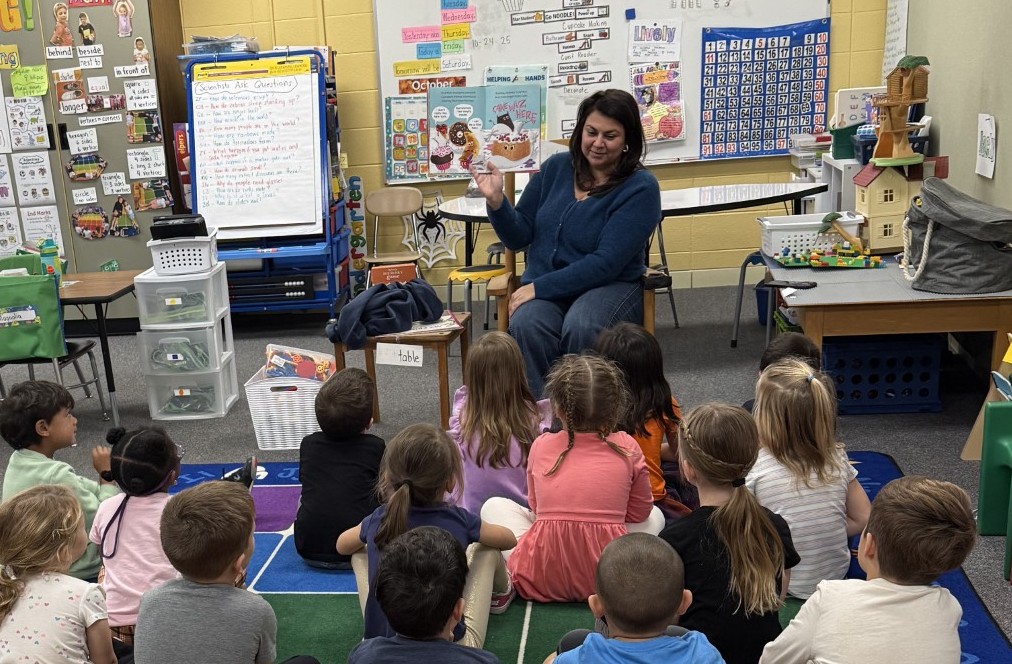Best Of BETT 2025: The Floor of BETT UK Shows Us AI Is Truly Here
The best of BETT 2025 is filled with AI innovations and more education tools

The best of BETT 2025 is here and we've been walking the show floor to find the very best tech on offer for education this year.
As the education world descends on London's ExCel Centre for this year's BETT 2025, it's clear that the hot topic is AI. While the show has been running since 1985, this is a special year -- not only because it's been 40 years since inception, but because the AI jump represents one of the biggest shifts in education yet.
So while there is plenty from the usual big names such as Google, Microsoft, and Lenovo, you can also expect to hear from AI creators, including Olex.ai, Keath, and others.
Here are the very best picks from what we saw on the BETT 2025 show floor to shift education into a new gear that could change the way we work for the best.
While this is our taster from the show floor, be sure to check out the Bett Awards for the final decisions on the very best to come out of BETT 2025.
Best of BETT 2025: Microsoft CoPilot and Spark
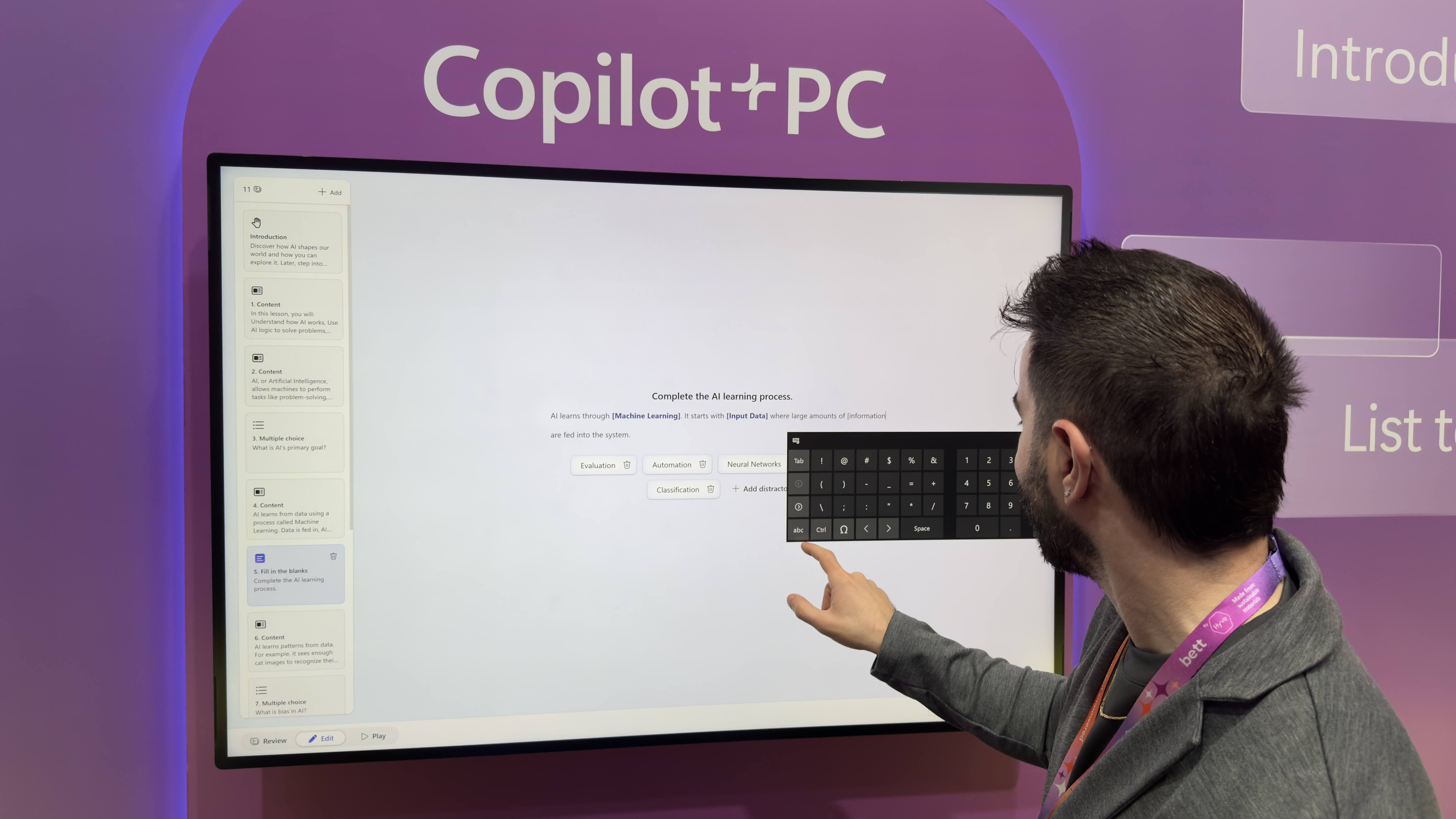
Microsoft has taken to the show floor with some serious AI advancements leading its offerings for 2025. Chief among these is the CoPilot AI smarts. This is essentially artificial intelligence baked into devices, including specific processors that allow teachers to use AI right there on the device, without an internet connection.
That should mean superfast responses and deep levels of control right there. So you might want to find something you remember from months back and there is only a description of what you were doing. The AI will work out what you've asked for and find it for you.
Tools and ideas to transform education. Sign up below.
Also shown off this year is the Spark software that uses AI to allow teachers to create useful assessment learning materials. Upload text, use stock images, and more, all of around which the AI will build a lesson. Students can then learn from the slides, while answering questions in various styles, getting feedback as they go. This is all auto-generated but can be edited by teachers to suit students or groups as needed.
Another area of advancement is in wellbeing, in which a fantastic free system called Reflect is now available that lets students check with teachers on how they are feeling. Usefully, this also offers deeper emotional language development and tools, such as video guidance, to help them -- all while letting the teacher know how they're doing in relation to any area on which they want to focus.
Olex.ai
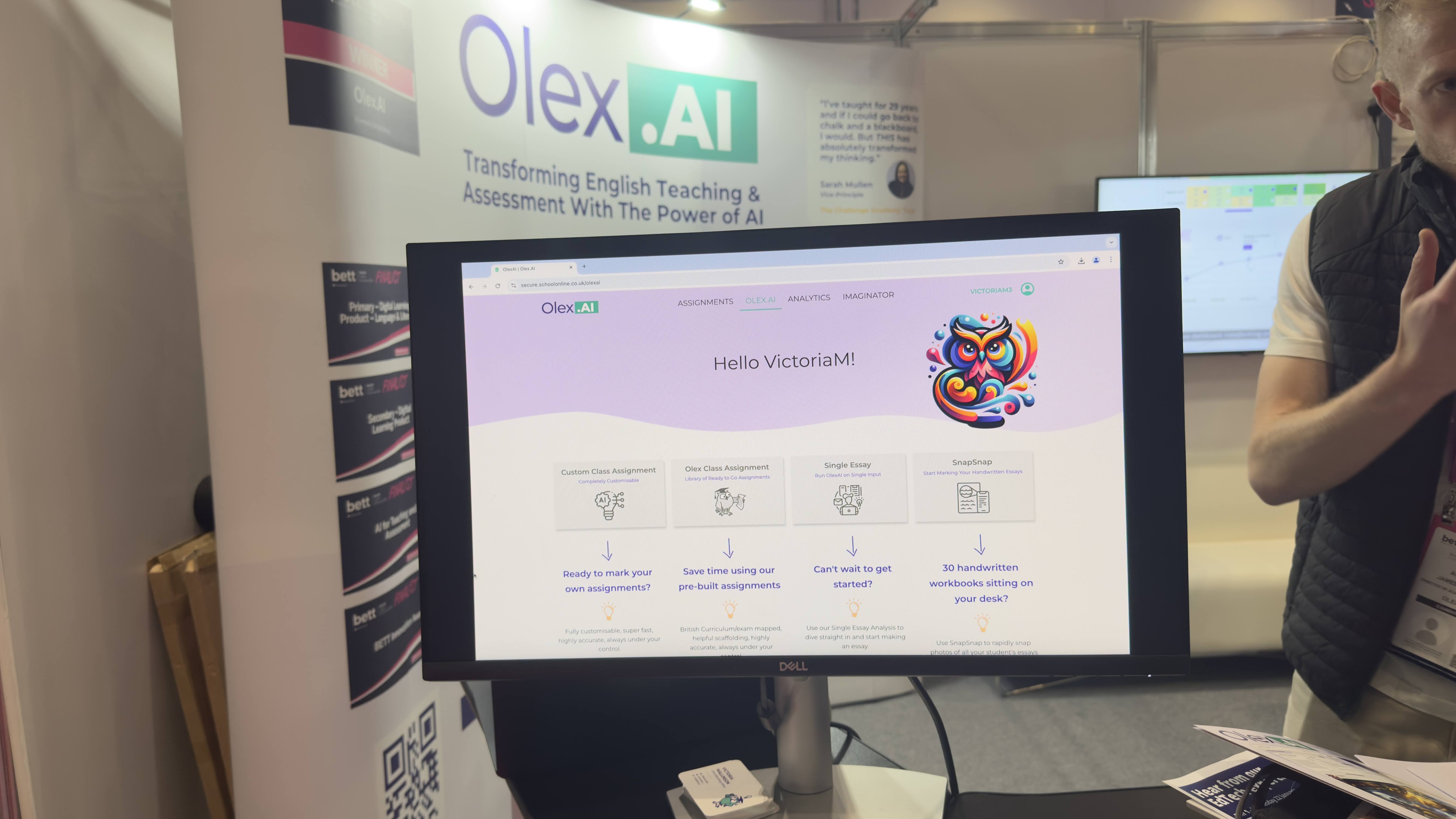
The Olex.ai platform has been awarded at BETT this year as a standout product thanks to the inventive solutions it offers. Teachers can use this artificially intelligent platform when teaching English.
Thanks to AI, this will help teachers mark essays for the whole class with detailed feedback, in under two minutes. And that applies to multiple languages so students get it all in their native tongue.
While a lot of this is automated, teachers can also apply nationally recognized rubrics or their own custom setups to suit individual or school needs.
This also offers automated lesson planning and can even take a student story and turn it into a visual narrative with AI-generated images, too.
RoboRobo
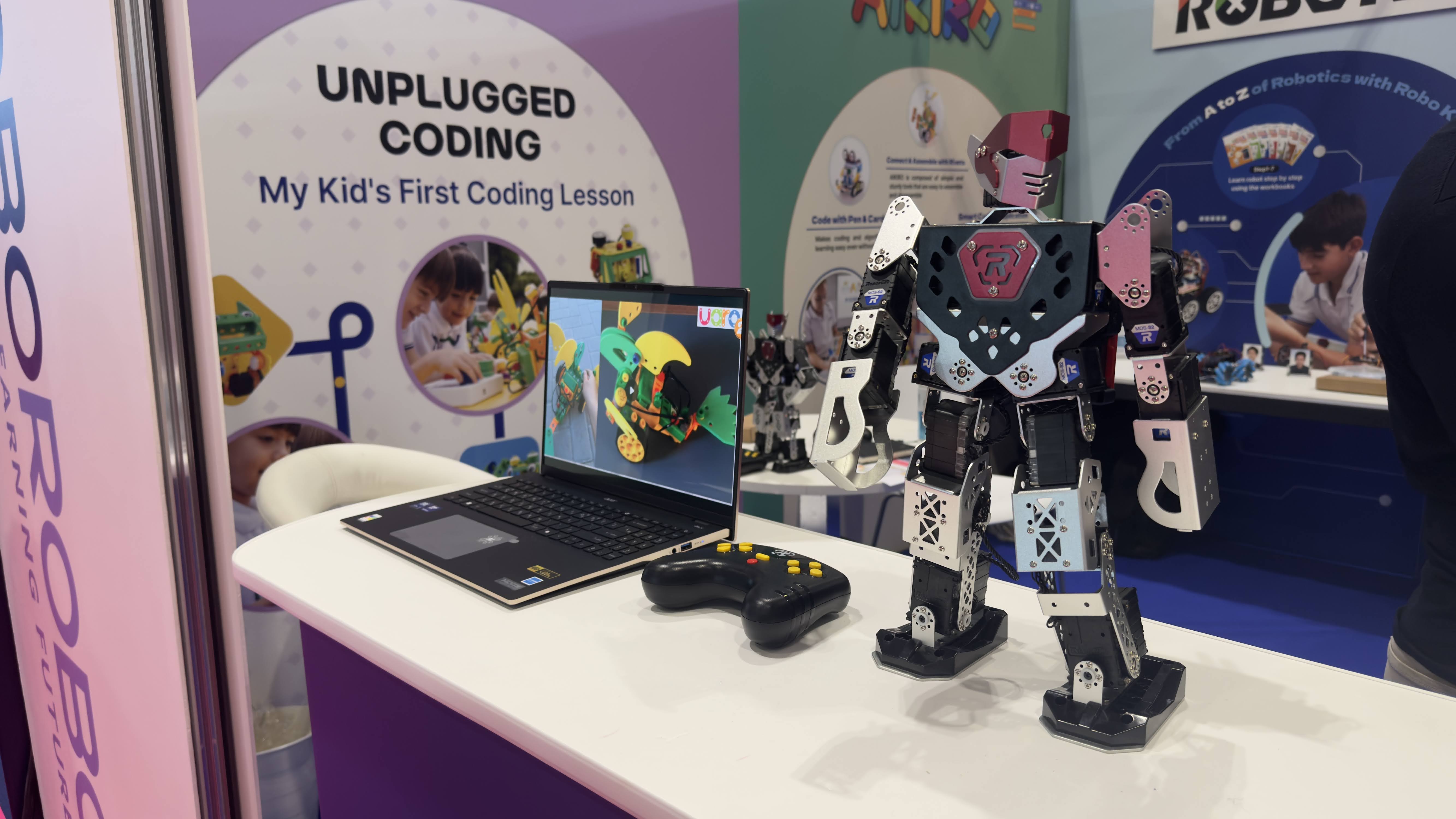
RoboRobo is a fun and interactive coding platform that uses robotics to make coding playful and real. This curriculum-based system allows for STEAM education in which students code for the joy of interacting with a robot -- while learning at the same time.
This offers varying levels that cater to students to match the level they are in coding, topping out at Black Line Pro in which students can learn real-world coding skills. But with RoboKids, this is also accessible to students that are new to coding and need to have a more sensor experience.
MagicSchool
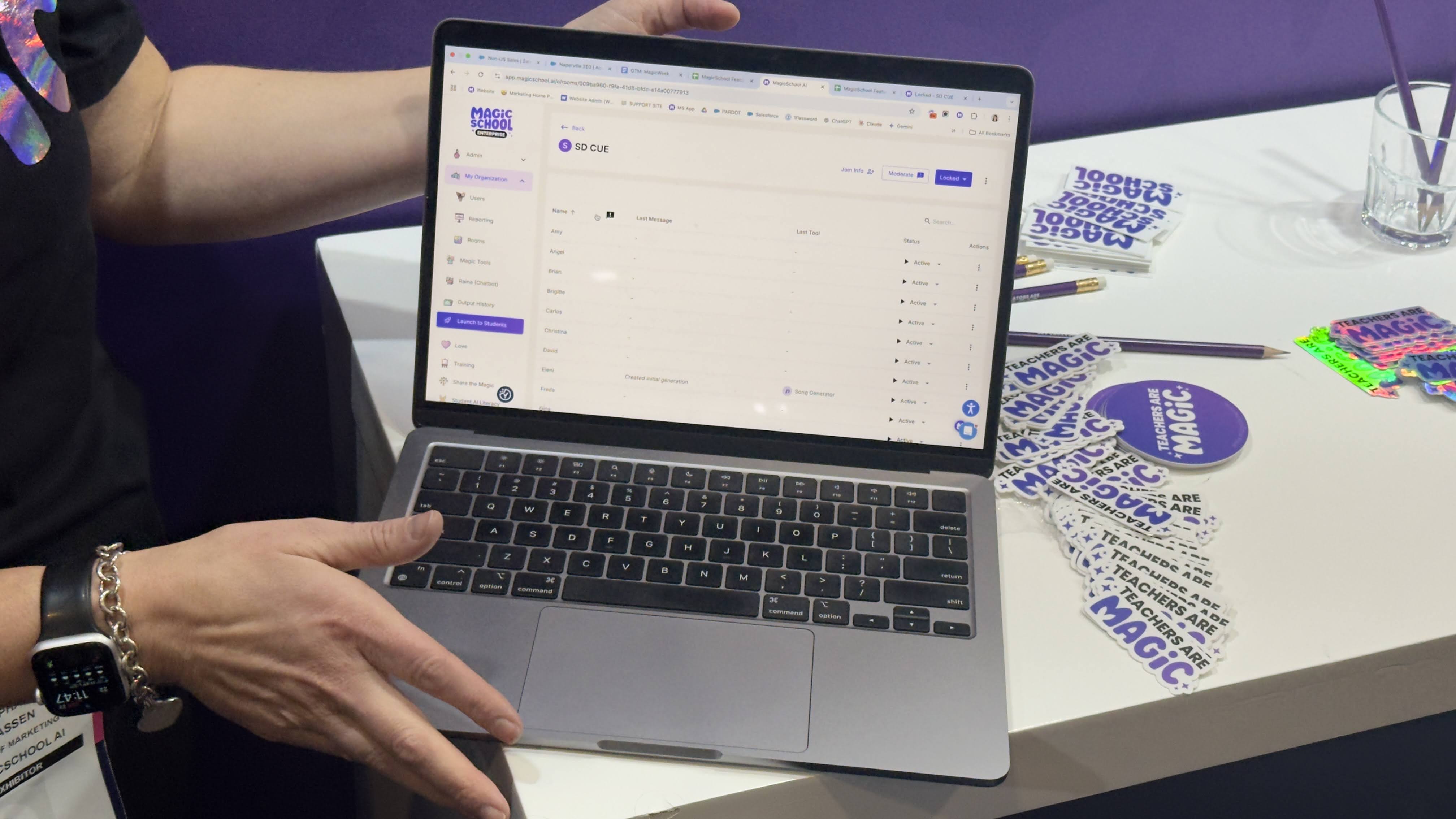
MagicSchool appeared at BETT 2025 to show off its AI-powered platform that makes custom tools for teachers easier to use and more powerful than ever. This combines lots of dynamic AI tools in one place, all aimed at education.
With Magic School, teachers are able to build academic content, proofread text, comment on report cards, generate images, rewrite text, generate rubrics, and plenty more. Crucially, since this is all AI-powered, it means a faster process with results that save time and can even lead to a more individual student learning experience.
Read our full MagicSchool review here.
Writer's Toolbox
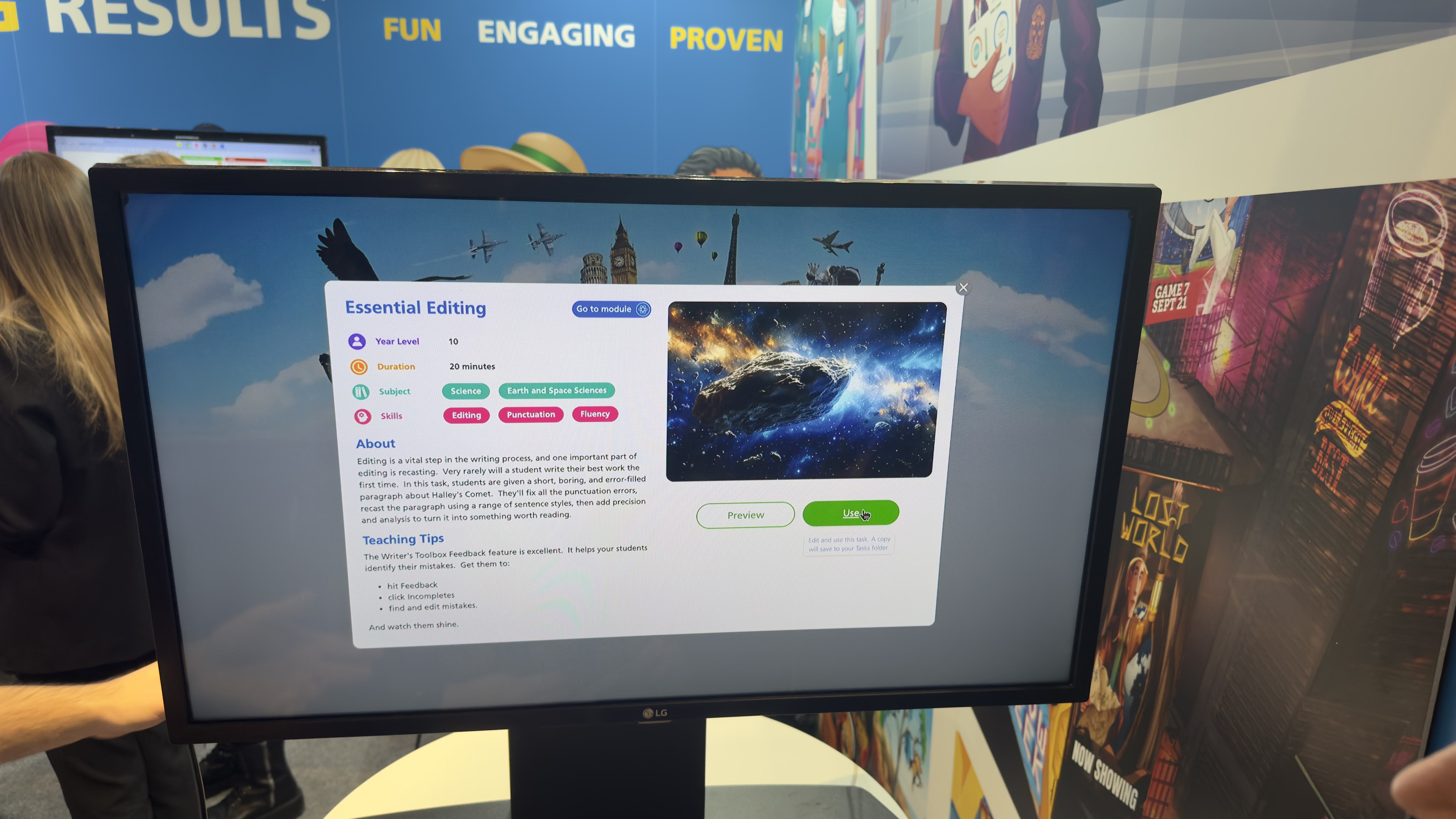
Writer's Toolbox, already popular in Australia and New Zealand, is at BETT to show the world how AI can help to transform writing instruction in schools.
The system works with students as they create, offering real-time feedback individualized to them, across topics, to help them progress. Creativity is at this tool's core and this applies across features such as the Sentence Train, paragraph scaffolds, classroom poster creation, and more.
Ultimately, this gets students more excited about engaging in the writing process.
Keath.ai
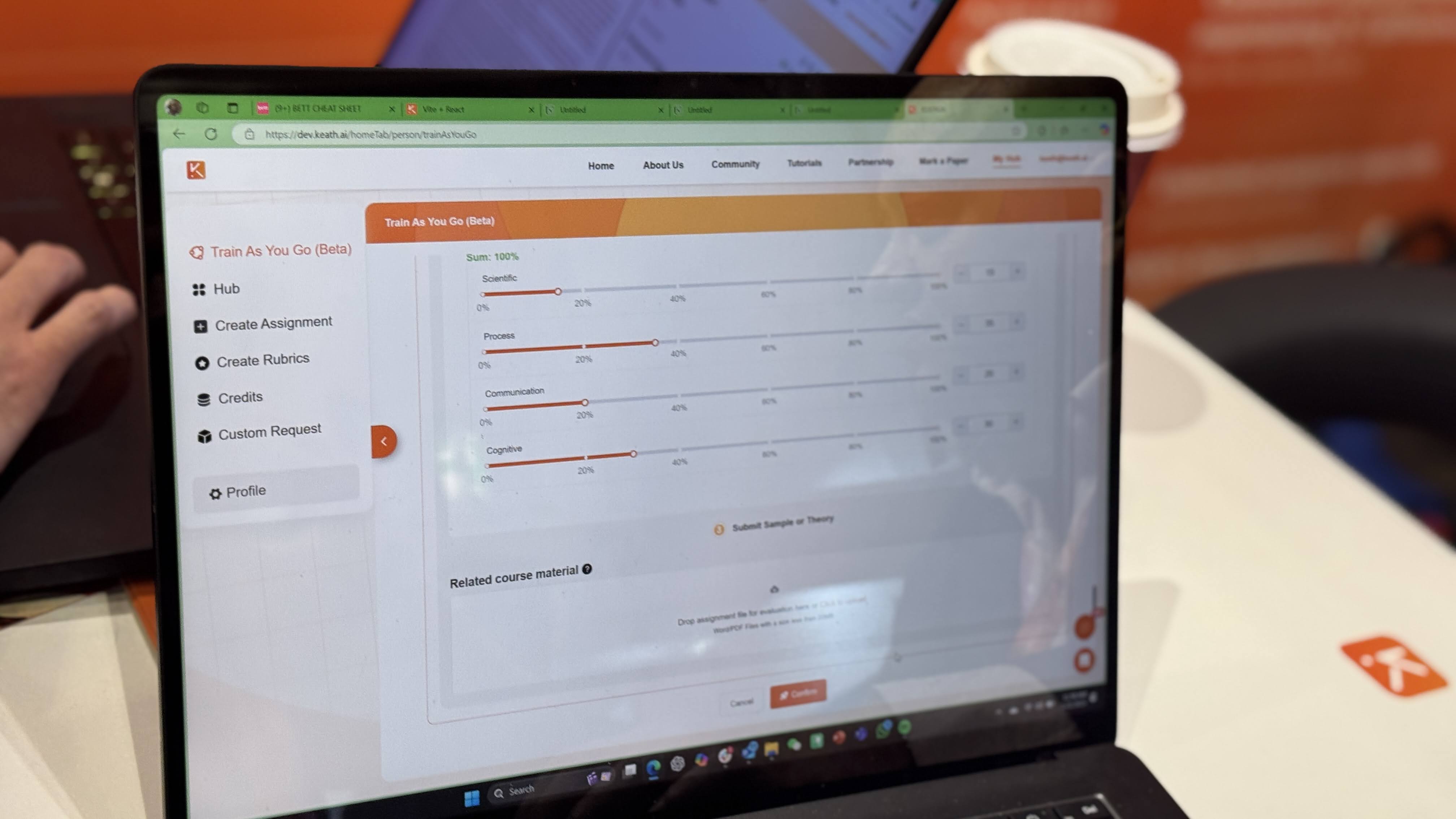
Keath.ai is using BETT 2025 to show off its AI-powered assessment tool, which it calls "a personalized AI Assessment Assistant."
This platform was developed with university-level research and government interest but has resulted in a tool that's available to all, and works for multiple levels of education.
The point here is that teachers should be able to make marking assessments, at scale, far easier. In fact, this can mark 1,000- to 15,000-word essays with a baseline accuracy of 85%, which is expected to hit 95% with ongoing training use.
EdTool.ai

EdTool.ai offers teachers a way to make tests and lesson interactive, instantly. Using generative AI, EdTool can help create presentation and assessments for use in class and beyond.
Since this is for business use as well as education, the complexity is helpful and allows for great levels of editing. Yet, thanks to an AI assistant, it is also simple to use and can quickly output tasks, such as creating a test, with ease.
Teachers can type what they want, upload any source materials, select a target age and ability group, pick the activity type, fine-tune, and generate. Simple yet powerful.
CodeMonkey
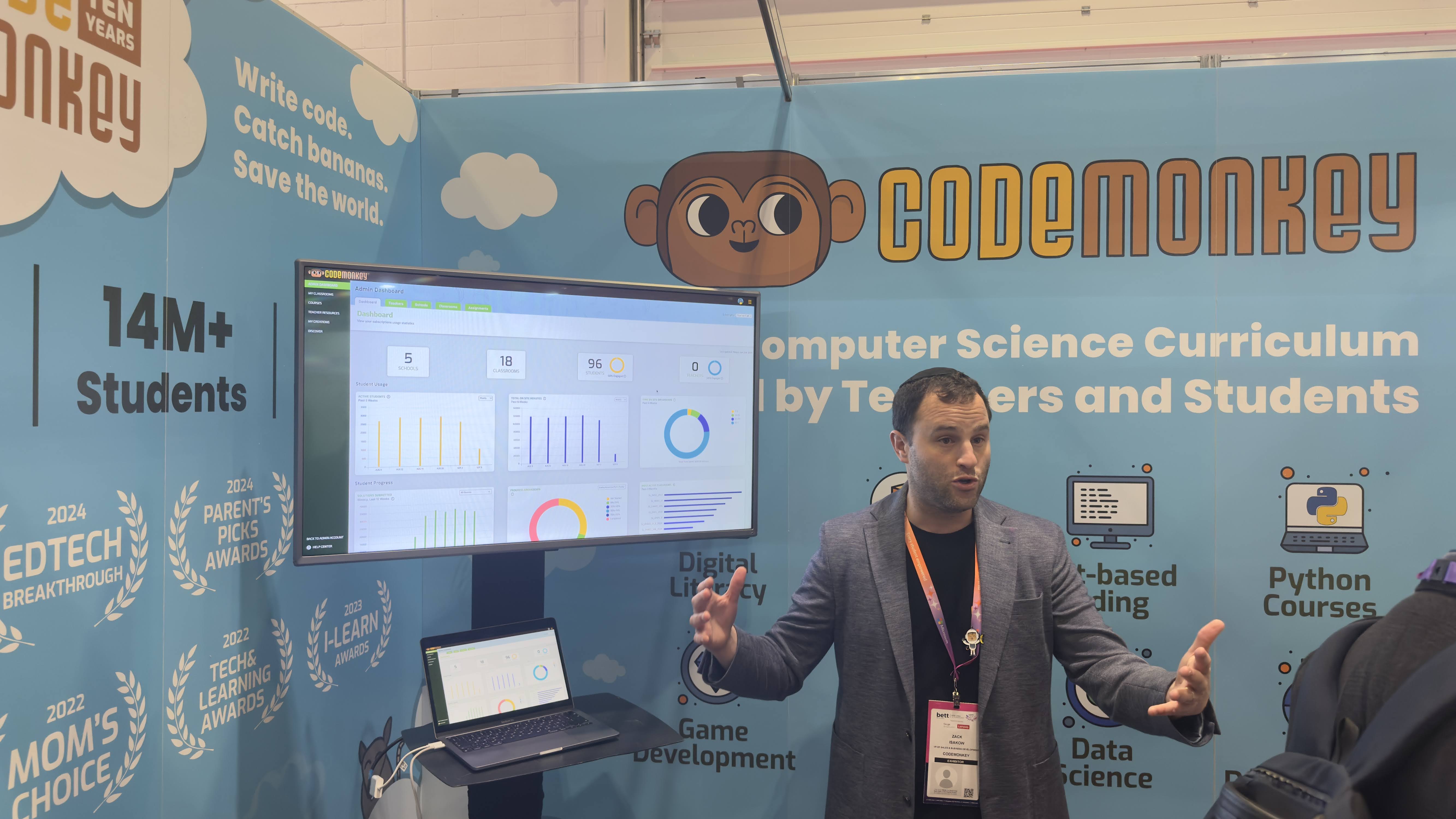
CodeMonkey appeared at BETT this year to show off its fun coding system for kids. The idea is to make programming enjoyable and easy enough to get even younger kids involved.
This teaches real-world coding such as Python and CoffeeScript so kids can gain usable skills. It begins with block-based and text-based coding so that younger students can get involved at a level suitable to them.
Crucially, this is all a game-style learning space, making it fun and immersive. Suited for students ranging from ages 5 to 14, this uses scaffolded puzzles and even allows students to build their own games.
Thanks to a teacher and admin dashboard, lesson plans, and assessment tools, this integrate well into class for ongoing learning. Plus, parents can track progress, and it allows for use at home.
Infento
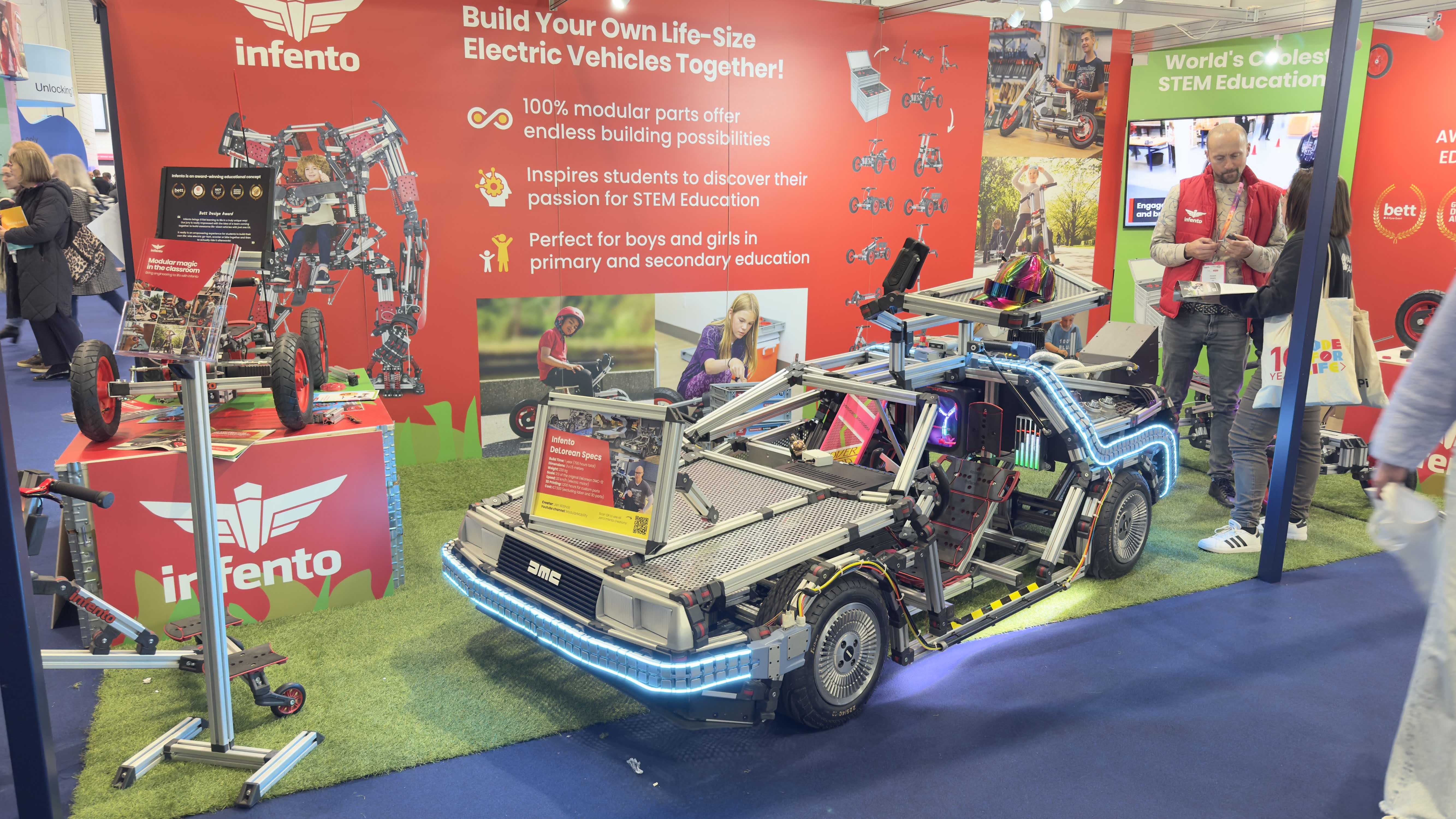
Infento is a modular toy-building system that makes STEM learning very fun. It also means, thanks to that modular nature, that creations can be hugely varied, limited only by the imagination of the maker.
As you can see from the Back To The Future DeLorean above, the limits of this are very few. From creating scooters and go karts to walkers and electric quads, this represents a lot of building fun.
Since kids can build real creations that they can ride and interact with, this is a super powerful experience with real motivation outcomes.
Many education-specific kits are available to suit the needs of the school age, student number, budget, and more.
Zoe
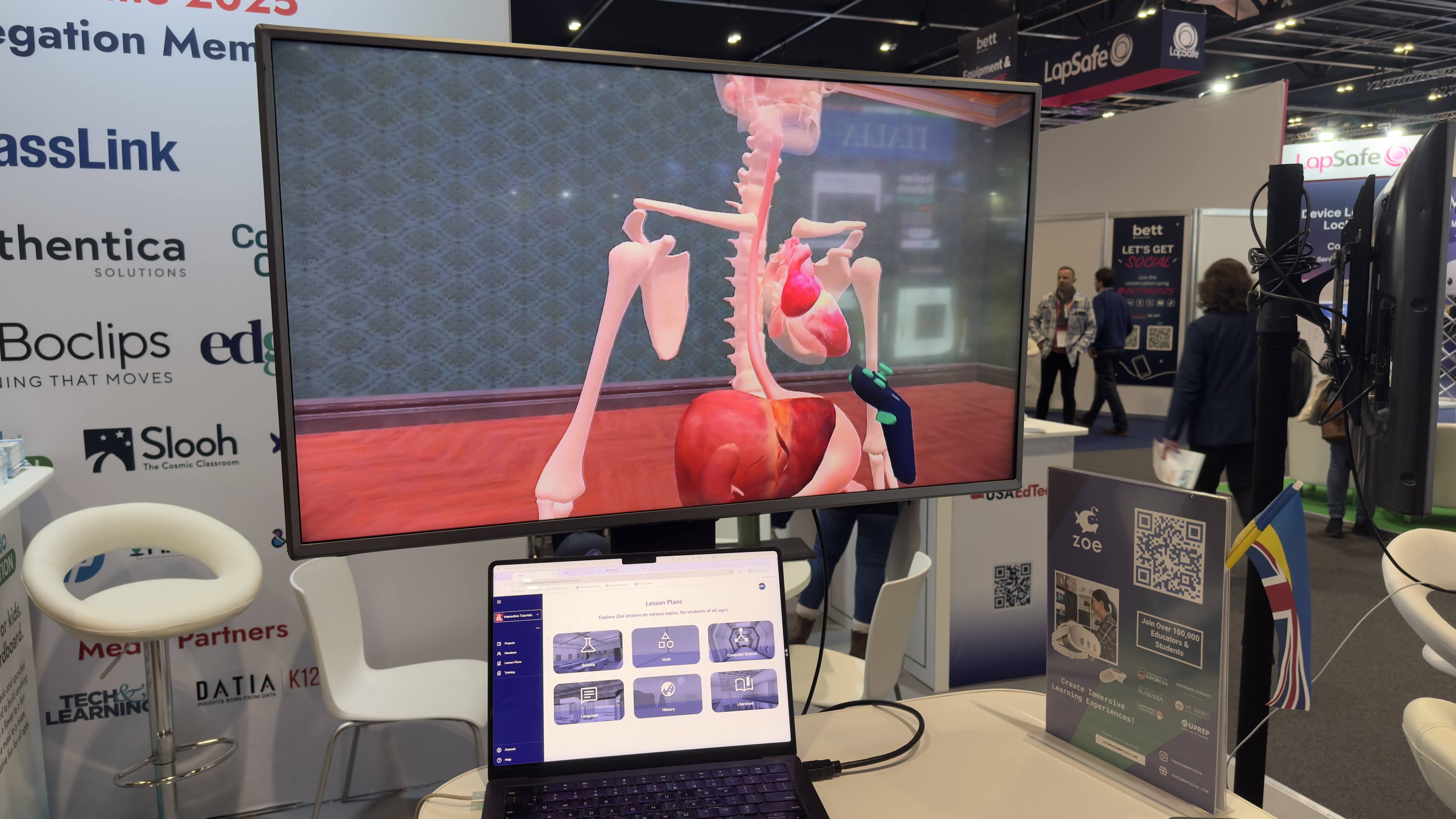
Zoe, brought to BETT 2025 as part of USA EdTech, represents a new way to teach using VR. This offers teachers a way to create their own bespoke virtual reality experiences to use in class.
Thanks to the user-friendly setup here, any teacher should be able to get up and running to build their own interactive VR experience relatively easily. You can dive into the Unity coding side of things to get more complex, if needed, as well.
The end result is a space to build virtual experiments, virtual trips around the world, and more -- bespoke. Since this is all shared as a community, it should mean more pre-built content that teachers can edit as needed, coming soon.
Check out the full list of USA EdTech tools at BETT 2025 here.
Luke Edwards is a freelance writer and editor with more than two decades of experience covering tech, science, and health. He writes for many publications covering health tech, software and apps, digital teaching tools, VPNs, TV, audio, smart home, antivirus, broadband, smartphones, cars and much more.

